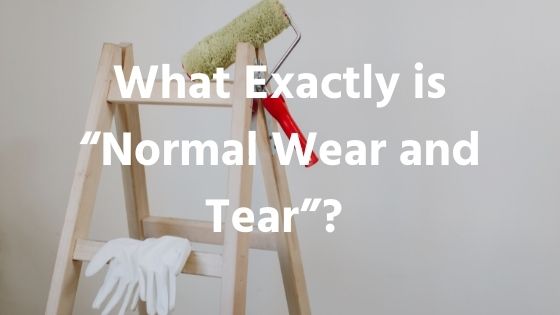In this article, we will help you to understand what normal wear and tear is versus what is damage. You should always confirm the condition of the unit before a tenant occupies it and after they have vacated.
This will help you determine any wear and tear or damage to the unit caused by the tenant. It is essential for you, as a landlord, to be able to distinguish between normal wear and tear and damage caused by negligence. Read further, and learn how to differentiate between the two!
Defining Normal Wear and Tear
In order to understand the term, it is important to first give it a definition. The phrase ‘normal wear and tear’ refers to the deterioration of a property that occurs as a result of frequent usage. Normal wear and tear is not a result of negligence, misuse, accident, or carelessness by the tenant but rather a natural cause due to the usage of the unit.
Normal wear and tear is a result of aging and cannot be prevented even by the most responsible tenant. An example is fading or peeling paint or the loss of shine of ceramic tiles.
How is Normal Wear and Tear Accounted for?
You are responsible for normal wear and tear on your investment property, and therefore cannot impose that charge on your tenant’s security deposit. However, if the tenant damages any part of the unit, then they are liable to cover the cost of repair.
Examples of normal wear and tear on your rental unit include:
- Faded paint or wallpaper
- Nail holes, chips, smudges, dents, and cracks that were present before the tenant occupied the space
- Worn out or faded carpet
- Scuffed wood floors
- Loose grouting in bathroom tiles
- Scratched or worn out enamel in bathtubs, sinks, or toilets
- Worn out appliances from usage
Common Wear and Tear Instances in Rental Properties
Flooring
Usually, when determining the normal wear and tear of material, you have to look at its lifespan. Let’s use the example of high-quality hardwood flooring which has a lifespan of about 20 years. It would therefore be normal to see some wear such as light scratching after several years of usage. However, huge damages such as holes would not be considered regular wear and tear.
The quality of the flooring material used can lead to different signs of normal wear and tear. Some common conditions and causes of normal wear and tear in other types of flooring include:
- Fading and wear in high traffic sections
- Peeling from low quality or less durable flooring material such as linoleum
- Worn out carpet area
- Fading from prolonged periods of exposure to sunlight
Walls
Painted walls are likely to show indicators of normal wear and tear. Most paints naturally wear out after a period of about three to five years. Some of the signs of normal wear and tear are:
- Fading from long periods of sunlight exposure
- Scuffs from daily activities
- Peeling
Other signs that can be spotted on walls include marks, paintings, or holes. These however could be indicators of tenant damage. This is why you must always document the state of a unit before and after a tenant moves out.
Appliances
Household appliances also experience wear and tear. It is important to know the durability of your appliances. Some common household appliances are fridges, stoves, and washing machines. As a landlord, you must be aware of the varying lifespans of your appliances.
Ensure that your appliances are in good condition when your tenants move in. This way, if there is breakage of the appliances, it will help you determine whether the breakage is from normal wearing off or from damage. Sudden breakages can be signs of damage but that is not always the case.
You must ensure that your appliances are well inspected before the arrival of your tenants, in order to determine the type of breakage.
Plumbing and Fixtures
The materials used in your plumbing systems can directly affect their durability. Due to the normal wearing out of the plumbing material, the system can have leaks and spillage. These defects can be easily mitigated through inspections prior to the tenant’s occupancy.
If the plumbing is determined to be in need of repair, you should schedule replacements in order to avoid significant damage to other parts of the house. You would not want water to spill over to your quality carpet or cause irreversible damage to your hardwood floor.
It may be a bit difficult to determine whether a malfunction is a result of damage or normal wear and tear. When dealing with technical issues, we recommend that you request the services of a technician to diagnose the issue and identify the likely cause of the problem.
In Conclusion
As you can see, there is a thin line between normal wear and tear and damage. To avoid losses and incurring additional costs, always ensure that you carry out inspections prior to leasing your property in order to track the state of your units when issues arise.


